Economic Analysis (GH)
Previous Page: Technical Analysis
This section describes economic circumstances that define this project as well as future projections of the costs of our project. This section will also cover the costs and benefits of our greenhouse power generation methods. For information on what types of power generation methods we have evaluated, see the Technical Analysis.
Economic Background
Sustainability is defined as the quality of not being harmful to the environment or depleting natural resources, and thereby supporting a long-term ecological balance. LaFarm is a sustainability initiative at the college and the cornerstone of the Lafayette College Sustainability Food Loop. By providing a technology that will benefit society as a whole, LaFarm provides food to the community as well as a teaching environment for the students of Lafayette College. These sustainable food and agriculture practices educate students, faculty, and citizens of Forks Township and the city of Easton ensuring a productive and healthy community and environment. This area also provides students with an interdisciplinary outdoor classroom for a hands-on experience that can be used for academic research and lectures increasing the value on the knowledge and wisdom that students pick up during their educational experience. LaFarm is a genuine feature that Lafayette College offers and cannot be replicated within a confined space.
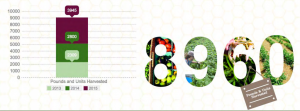 Since the inception of LaFarm in 2008, the farm has had a positive economic impact on Lafayette College as a whole. From growing produce for dining halls to recycling nutrients from composted food back to the soil as well as being a laboratory used for research, LaFarm enriches both the body and the mind. Beginning as a student initiative in 2008, LaFarm was funded from grants awarded by the Mellon and Clinton Foundation. At the time, LaFarm was an organization without any land to grow crops. In 2012, The Ludwick Family Foundation hired Jenn Bell (‘11) as the first farm manager who established the farm, organized the community garden, and hosted volunteer events. Then in 2013, the Ludwick Family Foundation provided funding to expand LaFarm’s management team by hiring full-time farm manager, Sarah Edmonds. Edmonds expanded production, built solar irrigation systems, implemented a variety of agricultural practices, managed soil fertility, worked with students, faculty, staff, and community to fortify the burgeoning Sustainable Food Loop of farming, dining, and compost. Edmonds has also played a role in expanding the size, programming, staff, events, outreach, and production LaFarm has to offer.
Since the inception of LaFarm in 2008, the farm has had a positive economic impact on Lafayette College as a whole. From growing produce for dining halls to recycling nutrients from composted food back to the soil as well as being a laboratory used for research, LaFarm enriches both the body and the mind. Beginning as a student initiative in 2008, LaFarm was funded from grants awarded by the Mellon and Clinton Foundation. At the time, LaFarm was an organization without any land to grow crops. In 2012, The Ludwick Family Foundation hired Jenn Bell (‘11) as the first farm manager who established the farm, organized the community garden, and hosted volunteer events. Then in 2013, the Ludwick Family Foundation provided funding to expand LaFarm’s management team by hiring full-time farm manager, Sarah Edmonds. Edmonds expanded production, built solar irrigation systems, implemented a variety of agricultural practices, managed soil fertility, worked with students, faculty, staff, and community to fortify the burgeoning Sustainable Food Loop of farming, dining, and compost. Edmonds has also played a role in expanding the size, programming, staff, events, outreach, and production LaFarm has to offer.

LaFarm is integrated within the Environmental Science and Studies curriculum and operates on an annual budget, a Faculty Advisory Board (LaFAB), one full-time farm manager, an active student organization, The Lafayette College Food and Farm Cooperative (LaFFCo), an average of three excel scholars, volunteer hours from a variety of on-campus organizations, and ten part-time student staff annually. Hand in hand with the increased land on LaFarm, the working staff has tripled resulting in increased hours of farming productivity and classroom integration. In 2015, the most productive year to date, LaFarm produced over three thousand pounds of vegetables amassing over seven thousand pounds of produce over the past three years. The produce is then sold to dining services for Marquis, Farinon, and Gilbert’s dining facilities at Lafayette College and donated to Easton area residents. LaFarm works very closely with Lafayette’s head chef to choose vegetable varieties, set prices, and ensure both the quality and quantity of LaFarm grown vegetables to improve upon the food loop and campus sustainability strengthening the relationship between dining services and compost production. The main agricultural practice that LaFarm utilizes is applying campus made compost which in 2015 was fifteen thousand pounds which comes out to about one hundred and fifty wheelbarrows increasing sustainability by reducing food waste dramatically. The food loop compost system is currently being reevaluated and will be moved on-site to LaFarm in the upcoming years making the site and system more effective and efficient. Transporting the compost production structure to LaFarm is part of The LaFarm Advisory Board’s multi phase strategic plan to “cut global warming emissions, integrate sustainability into the curriculum, and cultivate solutions to ensure a healthier environmental future” (2015 Annual Report). The LaFarm Greenhouse is one of the facets of this multi phase strategic plan.
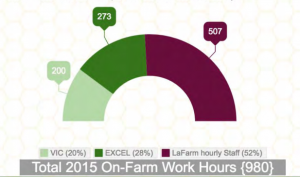
Currently, LaFarm rents out a section of a greenhouse to start seeds and get a head start on the growing season during the harsh winter months. This greenhouse is located in Emmaus, Pennsylvania which is twenty five miles away and is a forty minute drive there and back. Sarah Edmonds, the LaFarm manager visits this greenhouse twice a week during the growing season to tend to the crops while the workers there tend the crops for the other days of the week. Not only does LaFarm’s budget go towards the rental price of this greenhouse, but Sarah Edmonds pays an opportunity cost by taking three hours out of her week traveling that go towards tending to crops at LaFarm or caring towards other needs. Sarah Edmonds has also stated that this greenhouse in Emmaus will not be available for the upcoming year, making the construction of a greenhouse on LaFarm an imperative goal.
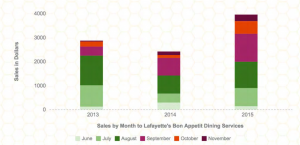
LaFarm has a number of ways in which they receive income for their annual budget of $11,000. This budget is accumulated through annual donations by alumni and various donors such as the Hendrickson family, selling crops to Bon Appetit during the growing season, and the college. In order to implement this greenhouse on LaFarm the college will have to donate increased funds towards LaFarm. For information on the costs for the structure of the LaFarm Greenhouse, please refer to the 2015 Greenhouse Report. The most effective and efficient option for the greenhouse structure would be the Gothic Greenhouse. This model would cost approximately $38,000 for the frame and materials, construction, equipment, and extra energy infrastructure along with a $285 yearly repair cost. According to Sarah Edmonds’ prior farming experience, more infrastructure on a farm is necessary to promise more sales and benefits.
Economic Context
The economics of this project are the key to its success. There are several factors that play into the economic aspects of this project which include: budgetary needs to finance the greenhouse, the socio economic health of LaFarm and its employees, Lafayette College’s involvement with LaFarm, and consistent growth to LaFarm. In order to fully integrate this carbon neutral greenhouse into the LaFarm community all of these factors must be consistently maintained allowing its performance to be at a high level. Failure to meet these requirements annually will result in a deficient structure that will not fulfill its purpose at LaFarm. Each of these defined requirements will enable players in this project to set goals daily, monthly, and annually as benchmarks to measure the impact and success of this project within the community.

The economic aspects that will be used to measure the success and impact of this project have broad definitions and cover a wide variety of concepts in order for this large project to be implemented on LaFarm. As this project contains social, political, and technical features, the economics of this project are equally as important. Without the financial resources to pay for this project it will not be possible to create and sustain. This greenhouse must be financed by Lafayette College through personal income, donations, and federal loans and grants. These financial sources will be used to pay for the materials used to build the structure, the technology for such functions of heating the greenhouse and watering plants, as well as installations of the structure and its components. In order for this project to become fully integrated within Lafayette’s campus, this greenhouse must be implemented in steps beginning with a series of feasibility studies such as this followed by construction of a basic structure and then installation of various technologies which include: renewable energy sources, advanced structures that provide water, and off the grid electricity. This greenhouse will take a number of steps to become fully recognized as a truly Carbon Neutral Greenhouse.
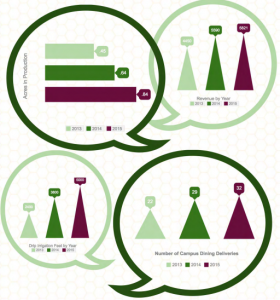
Our economic plan consists of two possible scenarios. Our first scenario consists of presenting our idea to the Lafayette College administration to receive funding. Our next scenario consists of pitching our idea to Lafayette’s facilities planning and management to initiate the planning phases for the construction of this project. We will rely primarily on the administration to receive funding as well as Student Government to receive any additional funds for future features of the greenhouse. Student Government which has a $500,000 budget each academic year to distribute to the various clubs around campus. The funds will be distributed to organizations relating to LaFarm such as the Lafayette Farm and Food Cooperative (LaFFCo), Greening Lafayette, and LaFarm itself. These organizations can also run fundraisers during the year specifically aimed at the greenhouse. We also advise contacting local organizations and alumni who willing to donate funds. Our benefactors will play a key role in the momentum and how long it will take for this project to enter its most sustainable form.
Cost/Benefit Analysis
Costs
Material Costs
Below is a listing of our proposed power generation options and their respective costs. These costs are based on researching various power generations options through multiple organizations and companies. The websites and charts can be found in our bibliography and appendix.
| Option 1: Off Grid and Carbon Neutral (given scenario) | |
| Solar Panels | $2,200,000 → $3,522,750 |
| Wind Turbines (230 kW) | $350,000 → $600,000 |
| Option 2: On Grid and Carbon Net Neutral | |
| Solar Panels | $175,000 → $280,218.75 |
| Wind Turbines (30 kW) | $120,000 → $180,000 |
| Buying Clean Electricity | ???* |
| Option 3: On Grid, Carbon Net Neutral, Layered Greenhouse | |
| Solar Panels | $47,000 → $75,258.75 |
| Wind Turbines (8 kW) | $32,000 → $57,000 |
| Layered Greenhouse | $2,000 → $10,000 |
| Buying Clean Electricity | ???* |
| Option 4: On Grid, Carbon Net Neutral, Layered Greenhouse, Geothermal Heating | |
| Solar Panels | $28,200 → $45,155 |
| Wind Turbines (5 kW) | $20,000 → $45,000 |
| Geothermal Heating System | $12,000 → $14,000 |
| Layered Greenhouse | $2,000 → $10,000 |
| Buying Clean Electricity | ???* |
| Option 5: Off Grid, CO2 emitting, Layered Greenhouse | |
| Natural Gas Heating System | $1000 + $1000 annually |
| Wood Burning System | $3000 + $1000 annually |
| Layered Greenhouse | $2,000 → $10,000 |
*In the case of the school administration or a future project group deciding upon buying clean energy it is up to their discretion which energy company they wish to buy it from. Based on the time table and company it is highly variable how much buying clean energy will cost.
Cost for Operation and Maintenance
A listing of possible fees and maintenance costs are required to keep the greenhouse operating throughout the year. Costs for weathering and damage must be taken into account for each year as well. These costs are difficult to account for as they are based on taking into account a set of unknown events that cannot be predicted. In order to take these unpredictable events into account, the new budget must set aside a specific amount each year to pay for possible unknown costs such as weathering to the structure and unforeseeable damages.
Benefits
The general benefit of any greenhouse is the ability to prolong growing seasons allowing an increase in a harvest leading to an increase in revenue. Seed starting is the main benefit of this greenhouse. The other problem that this greenhouse will solve is the long drive that LaFarm Manager Edmonds makes to the rental Greenhouse in Emmaus Pennsylvania. Manager Edmonds pays an enormous opportunity cost by traveling to this rental greenhouse twice a week during the growing season. This time can be used much more productively by tending to crops and taking care of certain matters at LaFarm. Also, Manager Edmonds pays out of pocket for transportation costs and in 2014, “used $2,300 of LaFarm’s budget on plants, rent for the greenhouse, seeds, and potting soil to start seeds” (Edmonds, 2015). These non-monetary and monetary costs could be used for other positive uses on LaFarm, however, with the absence of a greenhouse, LaFarm is limiting its potential for greatness.
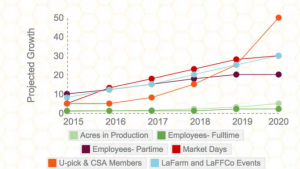
By installing this greenhouse on LaFarm a variety of positive externalities will emerge as well such as the increase in crops harvested, increase in EXCEL research and interdisciplinary projects, interest in LaFarm throughout Lafayette’s campus, and many more. The construction of this greenhouse along with the new compost processing facility at LaFarm will establish a major campus sustainability site. This site will serve as a new selling point for incoming students interested in sustainable practices as well as educating and garnering interest in current students who are not as aware of sustainable practices and goals our campus utilizes. With the new long term growth plan set in motion by President Byerly, Lafayette College will increase its student-faculty growth and the number of buildings the school owns. The evolution of the school and LaFarm will bring about a possibility that the LaFarm site could be the new beginning for an Environmental Campus.
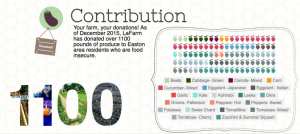
With the emergence of the Environmental Campus within the next ten years, a variety of majors will flock to this site on LaFarm utilizing it for research and interdisciplinary projects. The new sustainability director, Marie Fichek-Kirk will play a major role in promoting sustainability practices and will enhance the educational value of specific values at Lafayette. Fichek-Kirk will enhance the sustainability identity at Lafayette by increasing our campus’ sustainability rating from a silver to possibly gold or platinum by educating students on various sustainable practices and undertake specific roles in different projects throughout the campus as her role spans all three major parts of the college: administration, academics, and student life. One of these campus projects that Fichek-Kirk will play a role in would be the expansion of LaFarm and the installation of the Carbon Neutral Greenhouse. The economics involved in this project will play a crucial role, beginning with an expansion of LaFarm’s staff requiring several more full-time workers to be employed at the farm to assist Manager Edmonds for eight to ten hours a day during the growing seasons. Specifics requirements such as hours, how much work, and how many people to be introduced to the staff are up to the discretion of LaFarm’s administration, the sustainability director, and the Lafayette administration. Employing a sustainability director will not only help Lafayette as a campus, but will help the world by educating new generations in sustainability initiatives.
All charts and graphs are from the 2015 LaFarm Annual Report by Sarah Edmonds which is located in our Works Cited page.
